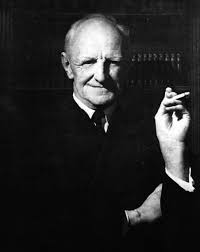Conversation 32: Narcissistic personality disorder according to the approach of the Reference Group Focused Therapy [RGFT]
Greetings
Narcissistic personality disorder is characterized by a variety of fantasies and grandiose behaviors, a great need for admiration and a lack of empathic ability [the ability to step into the other's shoes]. Figures in history who are mentioned in this context are Alexander the Great, Napoleon Bonaparte and Henry VIII alongside many others.
For example, many historians and biographers claim that Napoleon Bonaparte: the French military and political leader who rose to prominence during the French Revolution and related wars exhibited characteristics consistent with narcissistic disorder: he had a grand and grandiose vision for himself, he was preoccupied with fantasies of unlimited success, and he believed that he was special and unique.

Napoleon Bonaparte (1769 – 1821)
According to the American DSM-5 classification approach, the disorder is diagnosed in early adulthood after adolescence and manifests itself in five or more of the following characteristics:
1. A sense of grandiose self-importance: such as a tendency to overestimate skills and achievements, expecting those around to recognize one's superiority even though he has no corresponding achievements and skills.
2. Preoccupation with fantasies about success, beauty, extraordinary abilities, or ideal love.
3. The person believes that he is special or unique, and feels that only special and unusual people like him will be able to understand him.
4. Man needs a lot of admiration for the environment.
5. The person has a feeling that he is entitled to special privileges (the person has an unrealistic expectation of preferential treatment and that others must pay attention and immediately fulfill his expectations).
6. Man uses others to achieve personal goals within his interpersonal relationships.
7. Lacks empathy (a person lacks or is unable or unwilling to recognize the feelings of others).
8. Often a person is jealous of others or he believes that he is the object of others' jealousy.
9. The person often tends to demonstrate an arrogant attitude or behavior.
It seems that many of those with narcissistic personality disorder are characterized by unstable, incomplete and insecure attachment characteristics due to their experience with significant relationships in their early past that were unstable or ambivalent and did not provide sufficient security and left the person hurt without the ability to develop defenses [defense mechanisms].
The cognitive behavioral therapy [CBT] understanding of the disorder speaks of a thought and emotional system characterized by systems of perception of excessive and "inflated" self-importance, great difficulty in identifying with and developing empathy for others, and a great emphasis on one's position and status.
Interestingly, for narcissistic personality disorder, CBT can be helpful in preventing and mitigating behaviors that cause stress in their relationships. CBT can also help narcissists challenge distorted, internalized beliefs about themselves that can trigger emotional outbursts and narcissistic rage. In addition to subculture characteristics, research suggests that childhood experiences can play an important role in causing this personality disorder. Negative childhood experiences, such as rejection or criticism by parents, may contribute to the disorder in adulthood. At the same time, on the other hand, too much unrealistic praise and admiration from parents and the environment can lead to this.
We choose to bring here the summary of the comprehensive review article by Groszewski and his colleagues:
[Jaroszewski AC et al. A Cognitive-Behavioral Formulation of Narcissistic Self-Esteem Dysregulation. Published Online: 25 Oct. 2022. https://doi.org/10.1176/appi.focus.20220055]
The article states that: "Narcissistic personality disorder (NPD) is a common diagnosis, affecting approximately 1%-6% of the population, without sufficient evidence-based treatments. Recent studies have focused on dysregulation of self-esteem as a central component of narcissistic personality disorder: excessively high expectations of the person himself and how they should be handled lead to fragile self-esteem and maladaptive responses to threats to self-esteem.
The present article holds that specifically, symptoms of narcissistic personality disorder can be seen as a set of cognitive and behavioral habits used to regulate difficult emotions arising from maladaptive beliefs and misinterpretations of threats to self-esteem. This perspective turns narcissistic dysregulation into one that can be treated with cognitive-behavioral therapy (CBT) in which patients learn skills that help them gain awareness around their maladaptive responses, reframe cognitive distortions, and engage in behavioral experiments that are used to change maladaptive belief systems that consequently release them from maladaptive and problematic reactions.
The authors focus on the idea that narcissistic dysregulation of self-esteem likely varies continuously in the population and transdiagnosically [beyond a particular diagnosis] among the mental disorders. Greater insight into the cognitive-behavioral mechanisms of self-esteem dysregulation can therefore, in their opinion, foster tools to alleviate distress both in people with narcissistic personality disorder and among the general population."
As part of the treatment focused on the reference groups [RGFT] we propose as mentioned a model for the "self" in which one must first differentiate between the "primary self" which is actually the basic biological core consisting of a number of innate structures [see talks 1-3] and which is given for development during life. And the "social self" [secondary] which is a structure that develops during the exposure of a person to social influence and consists of internalizations of figures significant to the person [which we sometimes call them using the metaphor "directory of internalized figures"] that originate either from external groups or from imaginary groups related for example to a character from a story, from a myth, from a movie and more which had a considerable influence on man. We will note here that at birth there are innate patterns for most parts of the self such as for example the social self and its parts that form nuclei for the future development of these structures.
The physical self is defined as the set of experiences related to the perception of the body, its limits and sensations and also includes thoughts, attitudes and feelings towards the body and which begins with the innate physical self which as mentioned goes on and on in human life.
The "secondary selves" that make up the "social self" include 1] the variety of representations of the "I" that originate from attitudes and feelings towards the self and its representations in different periods of life 2] the representations of internalized figures that often originate from significant figures that the person is exposed to during his life but as mentioned may also be Imaginary characters represented in books, films, etc. that have had a considerable influence on man. 3] My representations of the "subculture" [subculture refers to social influences in the milieu in which a person lives and are not necessarily related to a specific person]. We note that, as a rule, a person is not aware of the influence of internalized characters on his behavior.
Finally, the "reflective self" which is defined as a structure that develops following the development of the social self and enables a comprehensive view [even a superview] of the individual's state of awareness and mental expressions.
Below we will discuss how the narcissistic personality is perceived in the light of this model that serves as a basis for the RGFT treatment.
We believe that there are four main routes to the formation of a narcissistic personality disorder or narcissistic traits in a variety of mental states, and in each of them a significant figure [or figures] that realistically strengthen the self-image was not internalized enough.
A) A significant figure or figures internalized in the board of figures, usually in the early stages of life, were offensive and humiliating figures that gave offensive messages to the self-image that became fragile and unstable and needed constant reinforcements from the person himself [self-admiration, attributing too much importance to himself, etc.] and from the outside from other people [admiration and giving importance more than others and more].
B] A significant figure or figures that were internalized in the board of figures usually in the early stages of life were figures that gave vague and ambivalent [ambiguous, contradictory] messages to the self-image that became fragile and unstable and became in need of constant reinforcements from the person himself and outside from other people.
C] A significant significant figure or figures that were internalized in the board of figures usually in the early stages of life were figures that expressed no regard and even disregard for the self-image that had become unstable and even fragile and in need of constant reinforcements from the person himself and from the outside from other people.
B] A significant figure or figures that were internalized in the board of figures usually in the early stages of life were figures that gave messages of excessive praise and adoration in stark contrast to reality and when this image met with realistic messages about it, it became fragile and unstable and needed constant reinforcements from the person himself and outside from other people.

Donald Winnicott English pediatrician and psychoanalyst (1896-1971)
It is interesting that one of us in the framework of his experiences with people with narcissistic disorders [I.S.] emphasizes that many times the dominant characters and even others in the board of characters of those suffering from narcissistic disorder are consensual, incomplete, and relatively superficial. It is possible, says I.S., that these figures have not been sufficiently established, that is, they have not reached stability in the array of internalized figures. They possess mostly functional characteristics and much less emotional features. It presumes a major failure in the internalization process – that is, emotional features are just barely internalized. And hence internalized figures do not support the self-image and therefore the person requires constant and excessive support for this image from himself and the outside world.
One of us [J.L.], believes that this happens because the influential realistic figures such as the mother or the father in early life in contact with the child did not express interactions [relationships] in the context of what the English psychoanalyst Donald Winnicott called "a good enough parent" but expressed interactions more in the negative direction, or the subdued and ambivalent one, or alternatively the ignoring one, or on the contrary only the positive and exaggerated one and in any case "not good enough" according to Winnicott so that it is encouraging and supportive on the one hand but also puts limits on the other hand when these are needed.
Example for the treatment of RGFT in narcissistic personality disorder.
Emotional life is the foundation on which our whole personality is built. If from the first moment after our arrival in the world, we are surrounded by love, support and help, there is a great chance that we will develop into mature people with a rich and well-rounded emotional life, we will be creative, open and sociable.
Unfortunately, the environment does not always provide us with the required support and love that we so need. When children consequently become incapable of sufficient empathy at a young age when there is no one to take the place of the parents as a significant empathic figure, then it is intuitively clear to us that they are in danger of developing emotional deprivations.
The matter is much less understandable when the biological parents are alive and functioning, at least on the surface. The child gets to eat, he is well dressed, he has a fine playroom. What is hidden from view is the fact that the child's emotional needs are not being met at all.
The parents are not empathetic with the child due to their own emotional circumstances, they treat him only in a functional way without being able to understand that their child is a separate person that requires a very personal treatment, especially in the emotional field. When the parents treat the child only as a function, then this is the feeling he grows up with. He felt himself indeed as a function, as a machine whose main function was to satisfy the will of the parents. He grew up unable to connect with his true feelings and also suffers from difficulty expressing emotion toward others.
Gadi (pseudonym), 46 years old, successful CEO of a large enterprise and father of five children, came to the clinic after he felt that despite all his efforts, he was having difficulty raising his children and was going through a deep relationship crisis with his wife. He was diagnosed as suffering from narcissistic personality disorder with fantasies of self-grandiosity and a constant need to receive reinforcements from the environment about his importance and status. "I am Gadi who knows everything, does everything, literally everything that is required of a father and a husband and yet something is not right here"… "My family's train is very close to derailing…" – declares Gadi in the first therapy meeting. He comes to the meeting with a laptop in his hand, which he described as his personal assistant; "I am," says Gadi, "a very well-oiled and special machine, and a freak of total control over everything that happens in my life" – this is how Gadi defines himself – "but here something is definitely happening that is out of my control."
In a conversation with him, he creates the impression of something like a sophisticated robot, on the one hand very emotionally restrained, purely rational and goes into the smallest technical details – and on the other hand needs many reinforcements for being different and special. When the therapist started working with him according to a psychotherapeutic method that uses the elevation of internal figures [RGFT, see previous articles in our blog ], the figures that emerged, including significant figures such as that of the mother and the father, were very pale and schematic and projected a lack of empathy towards him. They did not project emotion but referred to the functional aspect only.
And yet, when Gadi's emotions were expressed, as in the context of his eldest son for example, it was very difficult for him to relate to it. When the therapist pointed this out to him, he asked him, "Do you want to tell me that I love my son?" Gadi needed legitimacy from the therapist to admit his love for his son! In the course of individual meetings in which the internalized figures of the parents were brought up and Gadi had a dialogue with them, Gadi felt more and more liberated, even his body language testified to this, he became less restrained, began to smile and talk about things related to emotion, such as his difficult feelings after his son returned beaten after being confronted by a group of brats, his feeling of pain after a quarrel with his wife, frustration when something didn't go his way at work. His "emotional stocks" that had been empty for so long began to fill up, and he felt more and more reassured…
We’d like tomention here that it is also possible to encourage and support the creation of an imaginary figure that compensates and supports internally in cases of significant figures in the person in his early development that were offensive or ambivalent and vague in their messages or avoided support for self-worth. An interesting example of the creation of such a character is the one created by the well-known therapist Milton Erickson who built an imaginary character in a woman who compensated her for the neglecting significant figures in her childhood. During the therapeutic hypnotic sessions, Erickson went back with her through hypnotic regression to the years of her childhood and adolescence while he himself (as a supporting and comforting figure) visits her every February in her teenage years. And so, in fact, in several therapy sessions, he built an internalized supportive figure in her that accompanies her in her teenage years and provides a satisfactory answer to the deprivation she suffered from. In the context of RGFT, he actually created a significant figure on the board of her internalized figures. that the patient was aware of and of its influence upon her.

Milton Erickson and a female patient (1901-1980)
In this way, the therapist can gradually create an imaginary significant figure in the directory of figures [we will go into detail about creating imaginary figures including the creation of a TULPA in the directory of figures in the next conversation], which this time the patient will be aware of, and this will have an optimal effect on him and compensate for an inner feeling of deprivation and the attitudes and messages of internalized significant figures that do not provide support his feeling of self worth…
That's it for now, see you in the next conversation,
Dr. Igor Salganik Prof. Joseph Levine
 Prof. Joseph Levine, M.D. is an emeritus associate professor in the Division of Psychiatry, Faculty of Health Sciences, Ben Gurion University in Israel. Prof. Levine is a certified psychiatrist with clinical experience in controlled trials of adult psychiatric disorders and in psychotherapy. He was awarded a NRSAD independent investigator grant for the study of Creatine Monohydrate in psychiatric disorders -- mainly Schizophrenia. He resides and treats patients in Tel Aviv and all of central Israel.
Prof. Joseph Levine, M.D. is an emeritus associate professor in the Division of Psychiatry, Faculty of Health Sciences, Ben Gurion University in Israel. Prof. Levine is a certified psychiatrist with clinical experience in controlled trials of adult psychiatric disorders and in psychotherapy. He was awarded a NRSAD independent investigator grant for the study of Creatine Monohydrate in psychiatric disorders -- mainly Schizophrenia. He resides and treats patients in Tel Aviv and all of central Israel.
Leave a comment